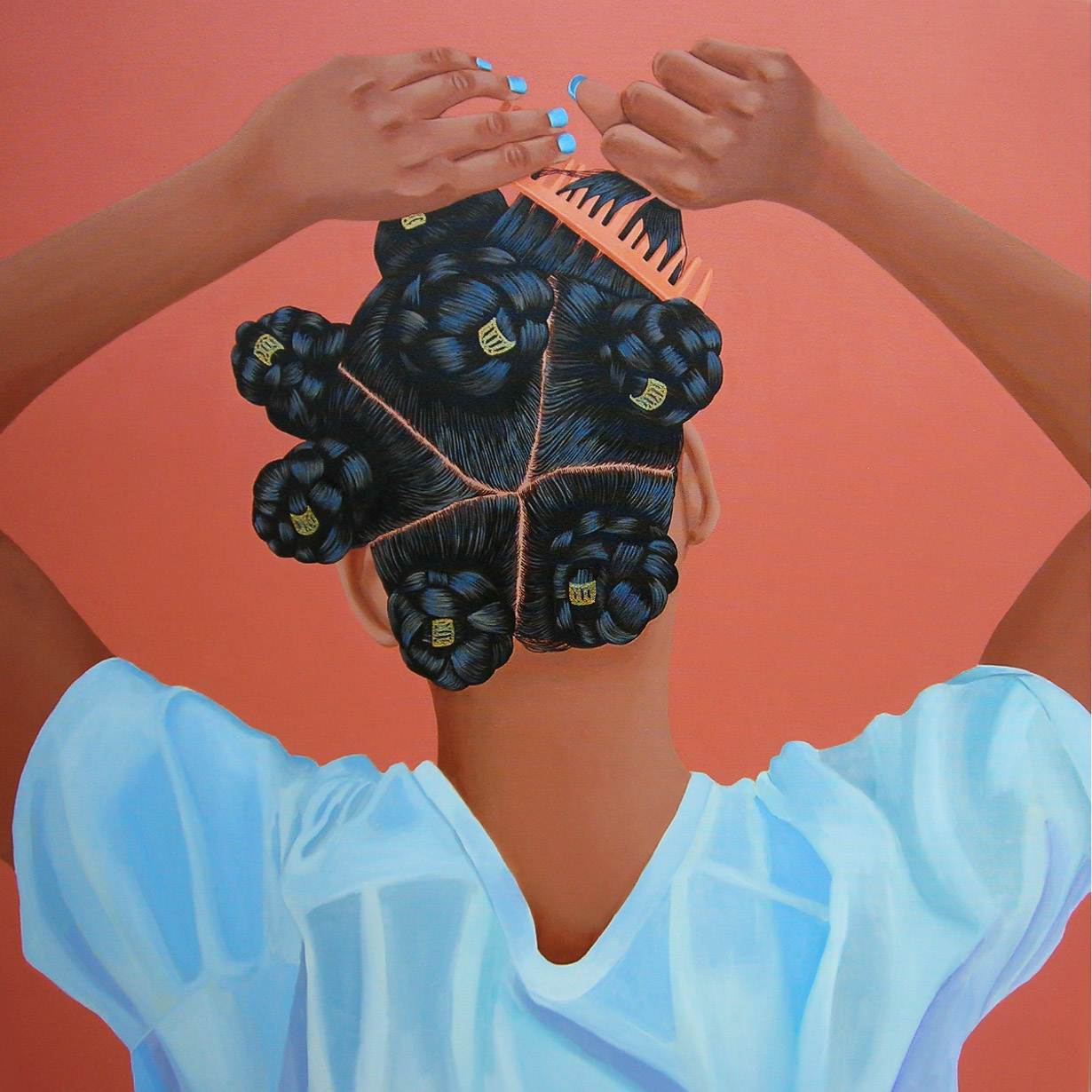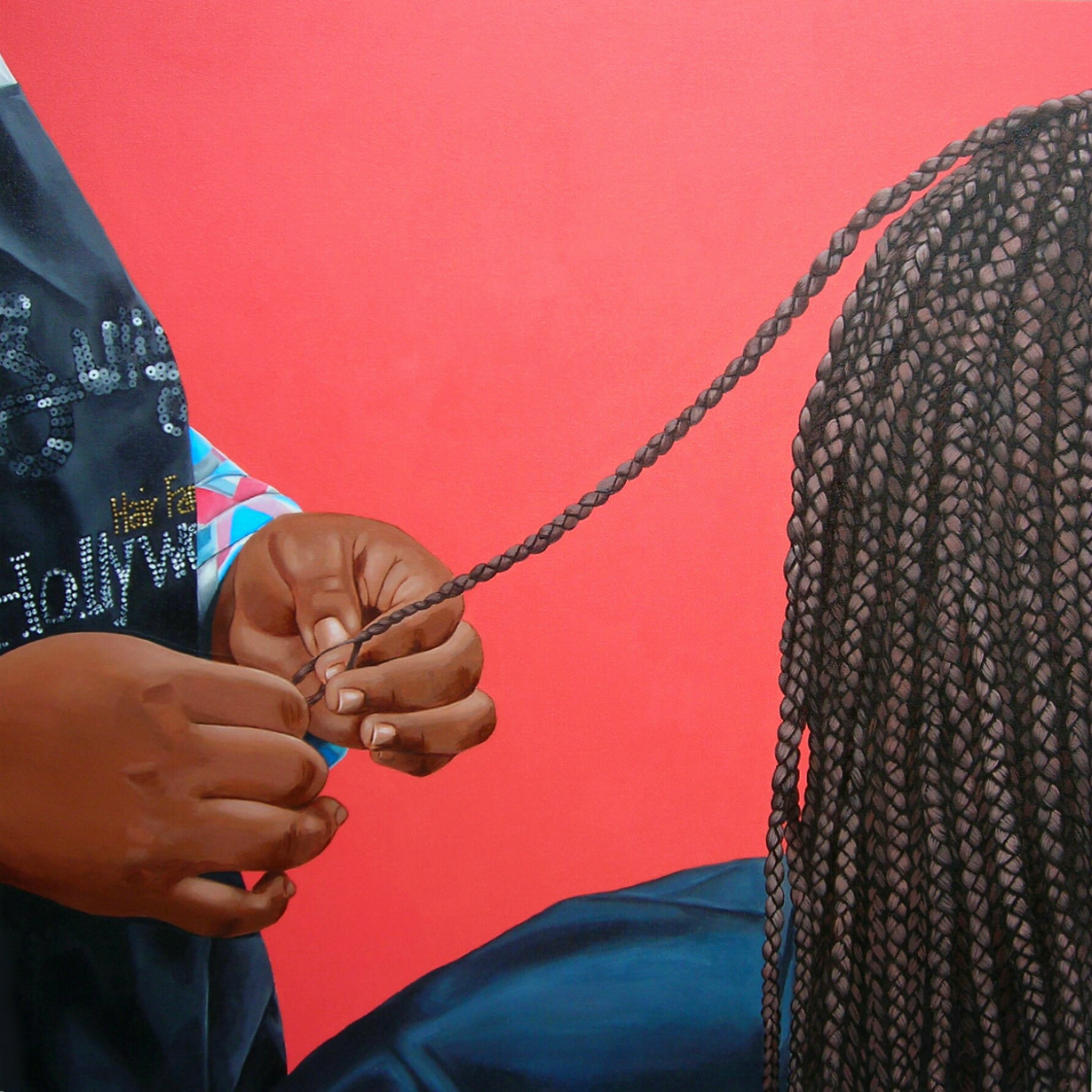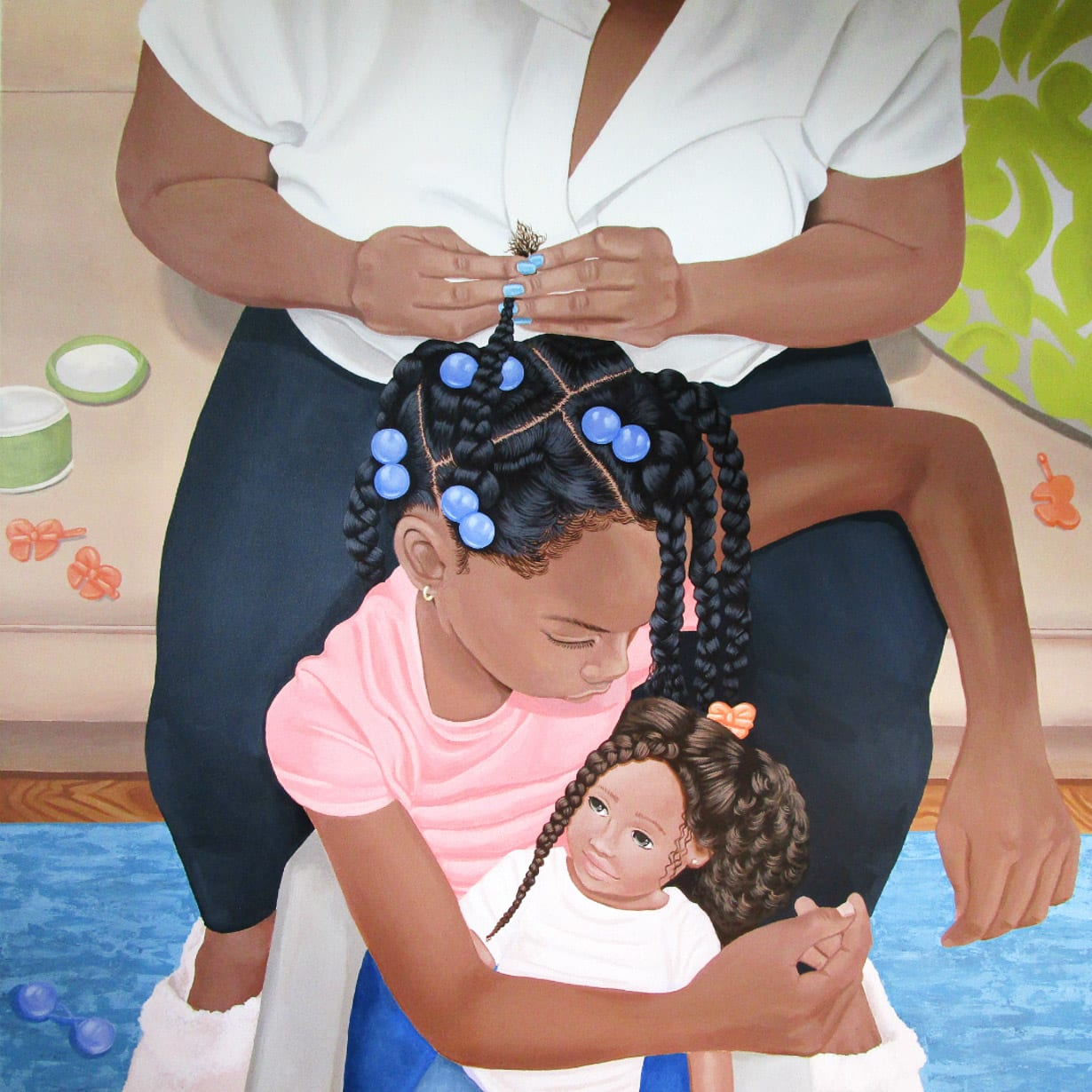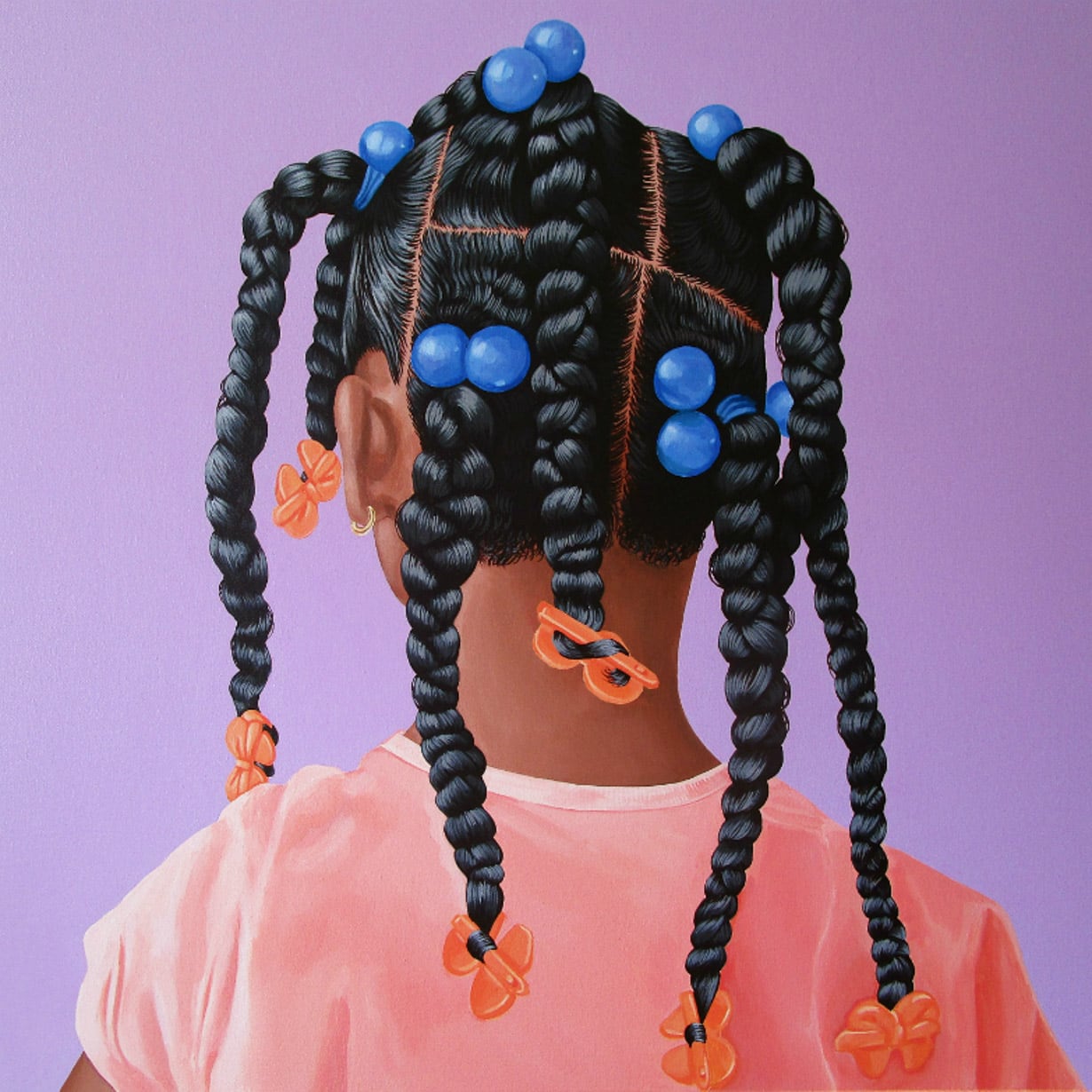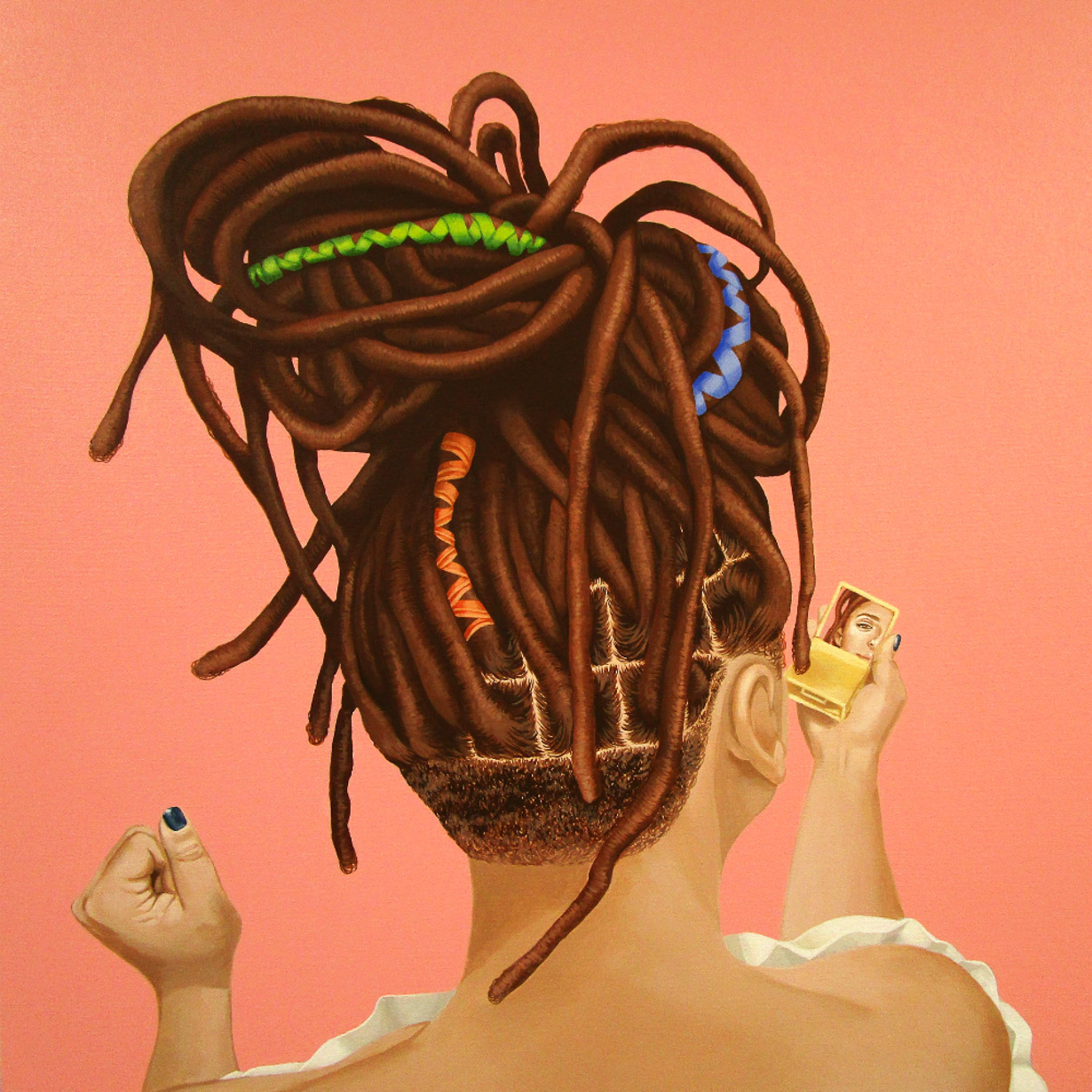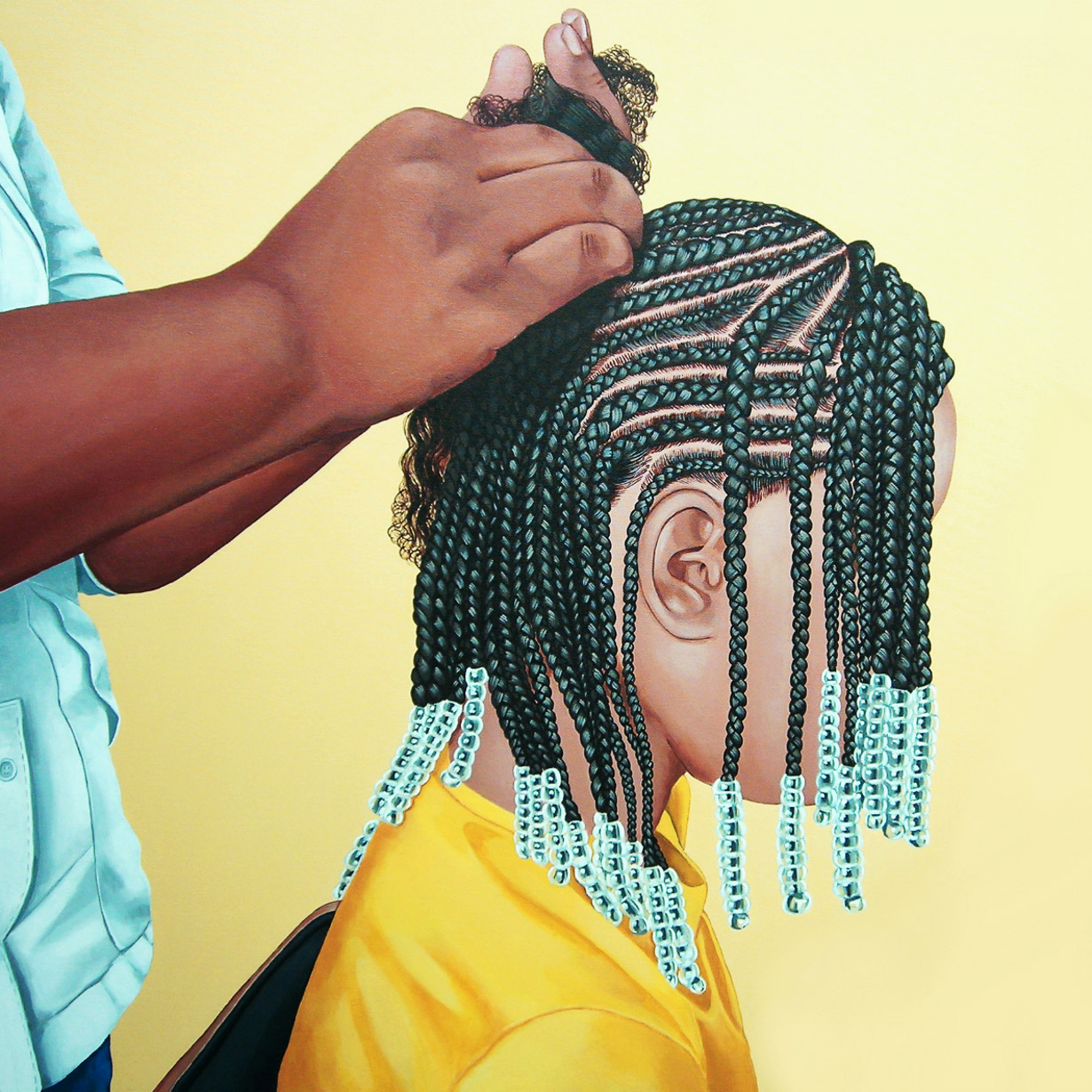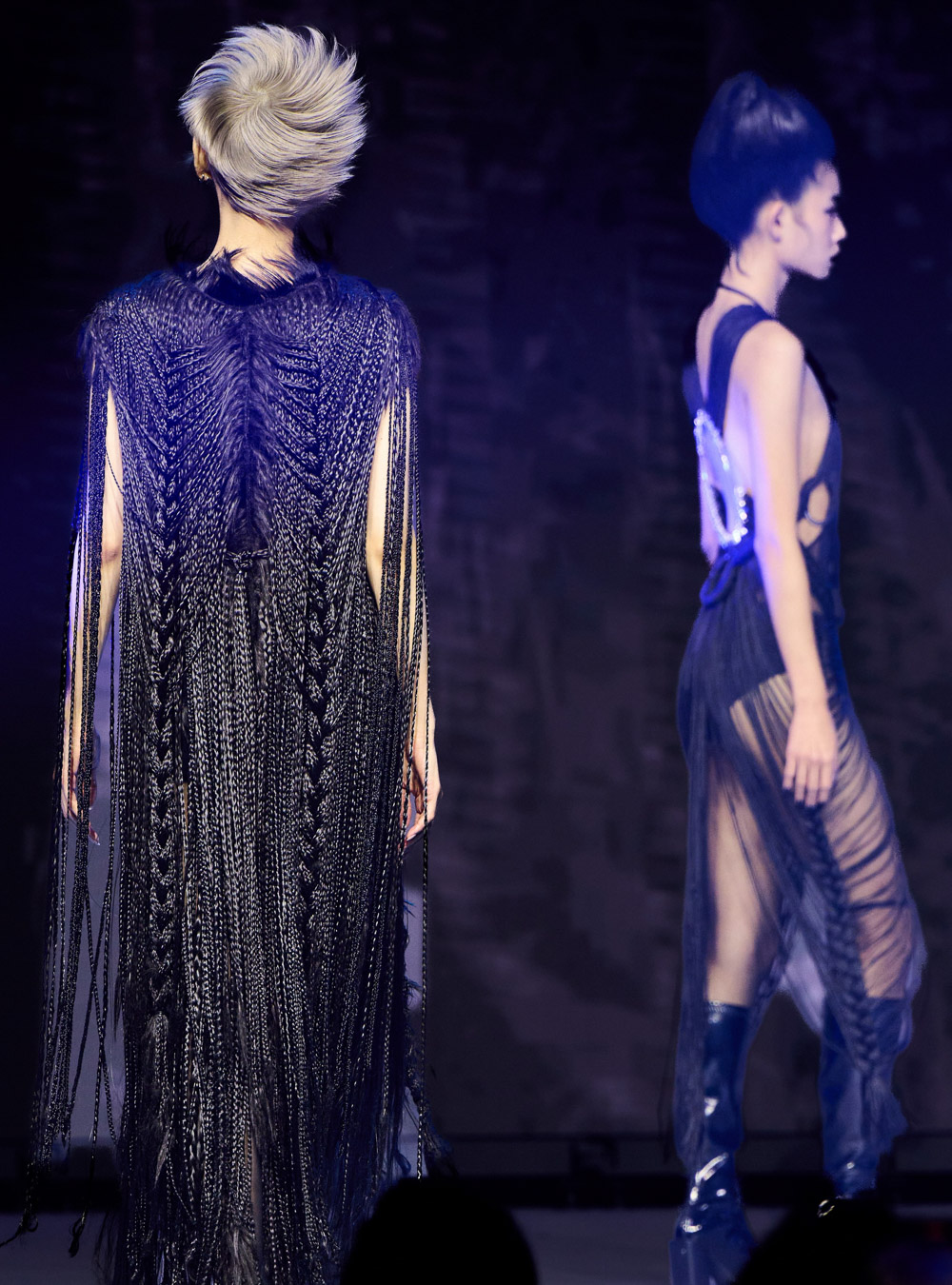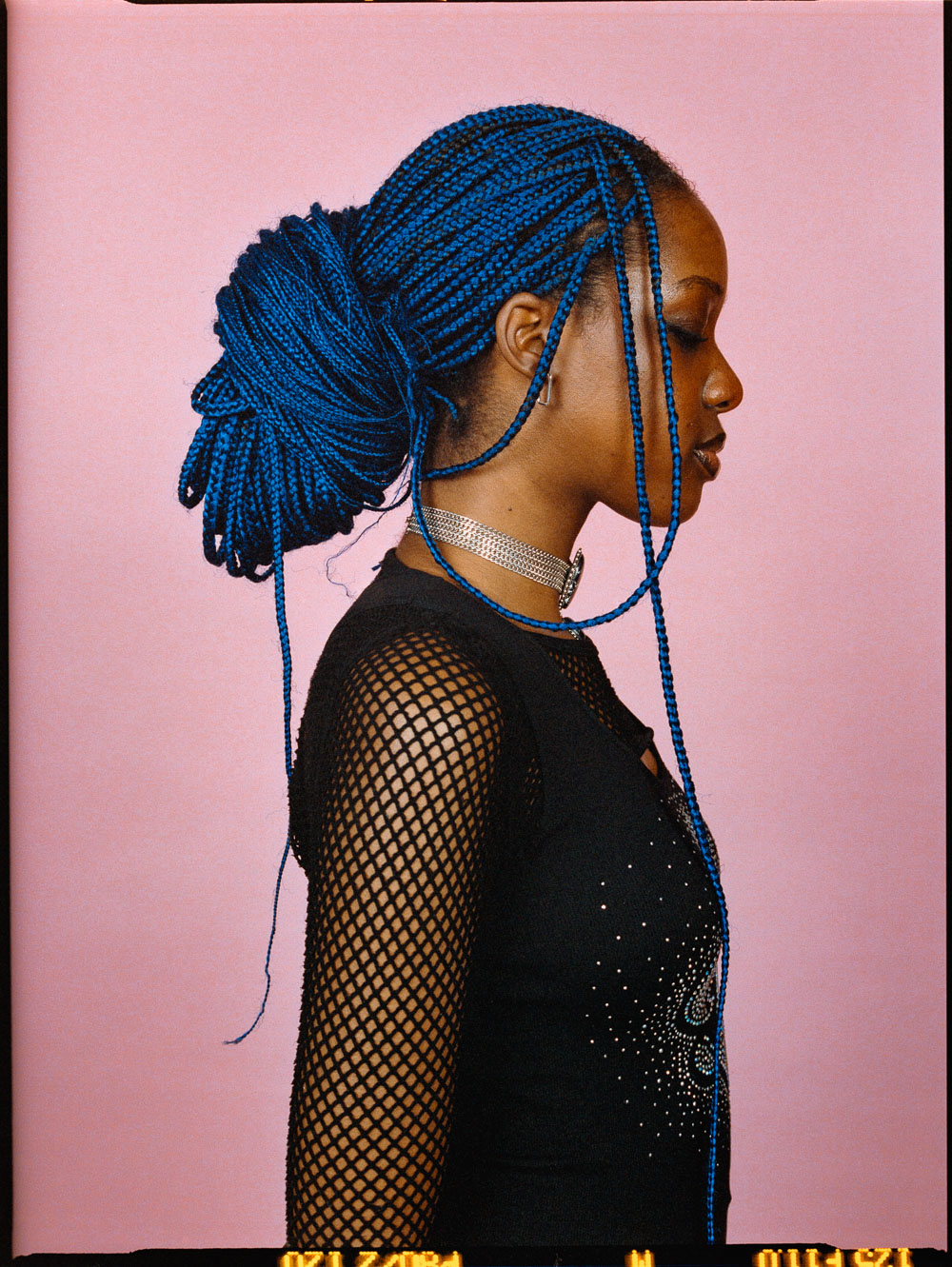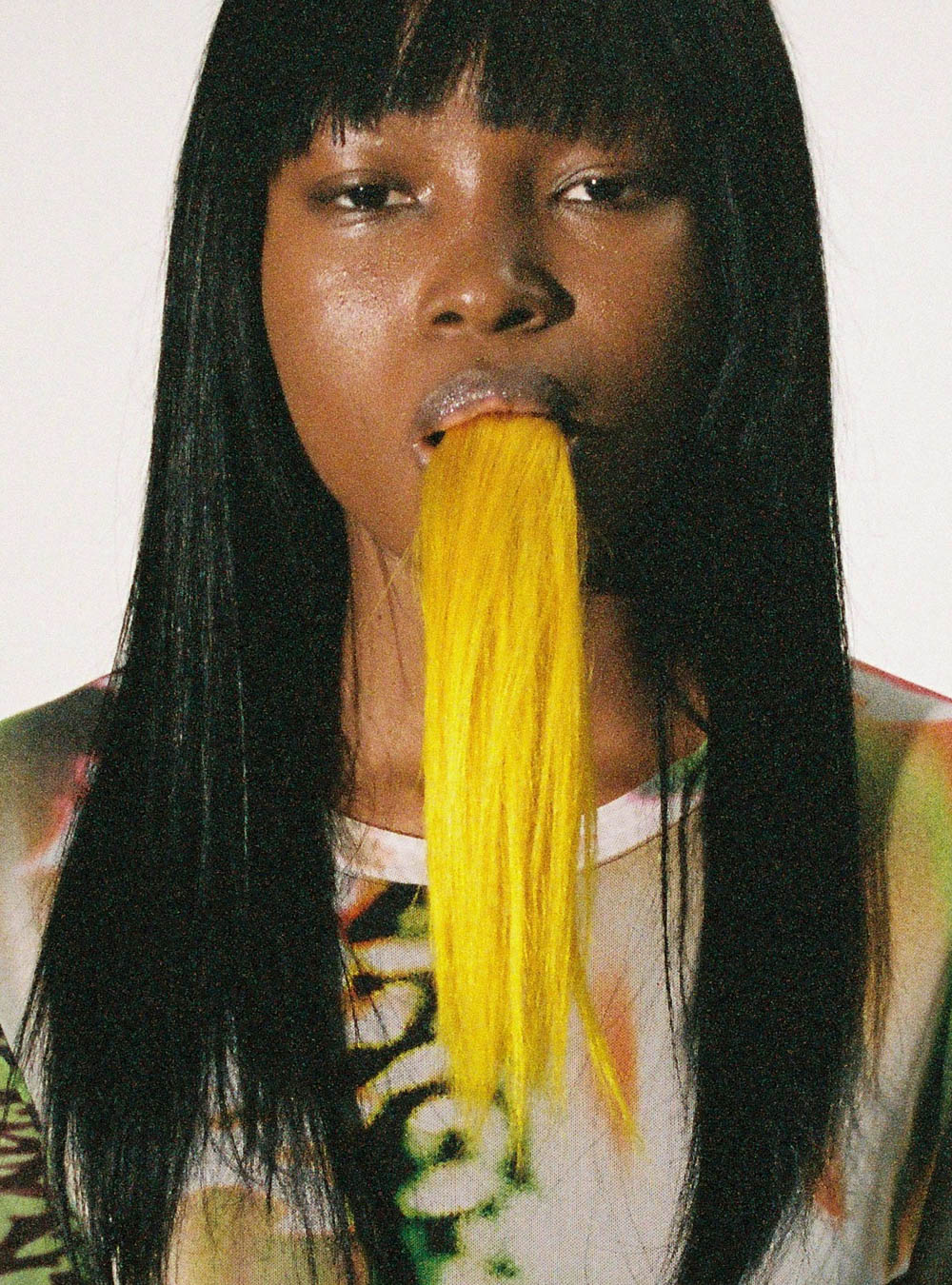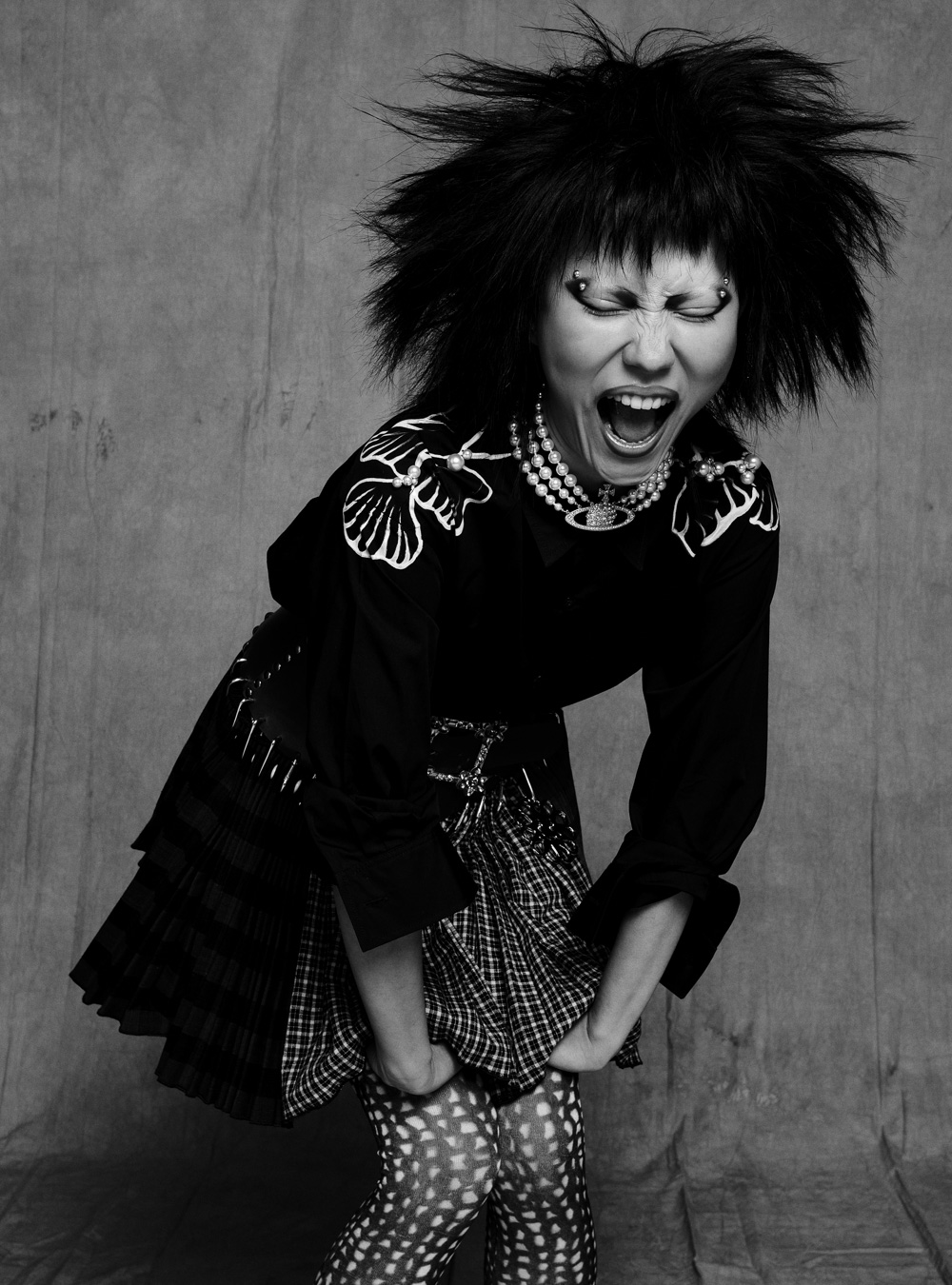- It’s a Process
- It’s a Process
- It’s a Process
ART+CULTURE: Jessica Spence’s paintings of protective hair styling capture moments that are both commonplace and intimately human
Paintings: Jessica Spence
Interview: Katharina Lina
Jessica Spence is a New York-based visual artist specialised in painting. Her works are inspired by her life, and largely revolve around black female identity. Her series It’s a Process is a collection of portraits of women with protective hairstyles, or in the midst of getting the hairstyles done. In an effort to move away from preconceived notions and stereotypical views on whole groups of people, Spence hopes to shine a positive light on the individuality of her subjects, as she highlights real moments that are both commonplace and intimately human. Protective hairstyles are not only about cultural heritage and beauty; they’re also about community, self-love and taking pride in your natural hair even when the outside world seems to keep telling you your natural hair is somehow ‘not right’.
When did you first know you were going to be an artist? I have always been a creative person and knew since I was in high school that I wanted to pursue a career in the arts. However, I didn’t know what field exactly. I decided to study various disciplines within studio art while in undergrad, which ultimately led me to focus on painting. One, because of my strong interest in it and two, it felt the most natural to me.
What is it about hair that drew in your interest? Hair is versatile, be it in texture or style. Hair is an outlet for self-expression. It is also something that we interact with frequently in our daily lives.
Who are the subjects in your paintings? The subjects in my paintings are those from my community, family, and friends.
These works depict the process and results of protective hairstyles, a big element of black female identity. Can you talk about the importance of creating more representation? Realistic and positive representation is important because it helps to show individuality within diversity. The subjects in my paintings are real people that have different experiences, cultures, and ideologies. Which may not always be represented in mainstream media outlets.
Black hair is still so policed and politicised that a painting of a black woman’s hair sparks questions of socio-political times instead of it being just a painting of hair. What are your thoughts on this? Historically Black hairstyles hold cultural significance and relevance. However, it is policed and inherently politicized because it does not fit into conventional beauty standards. There have been several stories in the news that illustrate how women and girls are being chastised in the workplace or in schools while wearing such hairstyles because it’s deemed “unprofessional” or “unkempt.” So much so that earlier this year the New York City Commission on Human Rights created a new set of guidelines to outlaw hairstyle-based discrimination. Ironically, these same hairstyles can be worn by those in pop culture and be viewed as “trendy”.
What would you like people to take away from viewing these paintings? I hope that viewers will be able to see the subjects in my paintings as individuals who are going about their daily lives, just like them. Also that in our differences, we find beauty.
- ANTHROPOLOGY OF HAIR
- ANTHROPOLOGY OF HAIR
- ANTHROPOLOGY OF HAIR
- ANTHROPOLOGY OF HAIR
- ANTHROPOLOGY OF HAIR

